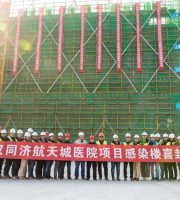During compaction, the adjacent two wheel tracks should overlap 1 / 3 of the wheel width to keep uniform compaction without leakage
. 
These materials have high friction coefficient, are not suitable for compression, have good permeability, and their strength is little affected by water, so they are the best materials for embankment filling
. 
When the route passes through paddy fields, ponds or depressions, the following treatment measures shall be taken according to the specific conditions such as ponding and silt layer, such as drainage and drainage, desilting and replacement (gravel or stone can be thrown and filled for roads below grade II, and the pressure and compaction are shown in the figure below), air drying or ash mixing; when the base soil is wet and soft and deep, the base treatment scheme of paddy fields or ponds shall be treated according to the soft soil foundation: 3 According to the technical code for construction of highway subgrade (1), silt, swamp soil, frozen soil, organic soil, turf soil, domestic garbage, tree roots and soil containing decaying substances shall not be used as embankment filling materials
. 
When vibratory roller is used for rolling, static pressure shall be applied in the first pass and vibratory compaction shall be applied in the second pass
. 
(3) Transverse filling method: from the longitudinal or transverse direction of the embankment, the filling shall be carried out step by step according to the full height
. 
(4) Within the scope of embankment construction, pits, holes and foundation pits on the original ground shall be backfilled and compacted
. 
It is often used for the route crossing deep valley or passing through steep slope section and bog area, but it is not easy to compact and the settlement is uneven
. 
Control of rolling process: in order to effectively compact the subgrade filling soil, the following control must be made for the rolling process: the required compaction degree of subgrade depends on the type of filling and excavation, highway grade and the height of embankment filling
. 
(3) Steel slag, fly ash and other materials can be used as Embankment Filler, and other industrial wastes should be tested for the content of harmful substances before use, so as to avoid excessive harmful substances and environmental pollution
. 
In the process of compaction, the water content of fill should be strictly controlled
.
The suitable thickness and required compaction times of different soil types rolled by various compaction machines are related to the actual water content (the best water content is within ± 2%) and the required compactness of the fill, which should be determined during the test section according to the required compactness
.
3) rolling should be carried out in longitudinal branches
.
The filling materials of Expressway and first-class highway embankment should take soil samples on site and carry out geotechnical tests
.
The filling materials for highway embankments of grade II and below are also selected according to the following table
.
Static compaction type: (smooth roller, sheep foot roller, pneumatic tire roller) cohesive soil compaction type: cohesive soil vibration type: Sandy Soil practical experience has proved that: when soil foundation is compacted, under the condition that the type of machine, thickness of soil layer and travel times have been selected, the compaction operation should be light first and then heavy, slow first and then fast, edge first and then middle (super-high road section, etc.), low first and then high from inside to outside
.
The relative value of the ratio of the dry bulk density measured at the construction site to the value of γ 0 obtained from the indoor standard compaction test is called the degree of compaction K
.
(3) when the base soil is humus soil, the surface soil must be removed manually or mechanically Generally, the replacement thickness should not be less than 30cm
.
There are many types of soil compaction machines, which can be roughly divided into three types: rolling type, tamping type and vibrating type
.
Compactness K is the compaction standard of subgrade stipulated in current specifications
.
(2) The soil with liquid limit more than 50%, plasticity index more than 26, and the soil with water content more than specified shall not be directly used as embankment filling
.
The relevant indexes should meet the requirements of the table below
.
4
.
When it needs to be applied, technical measures meeting the design requirements must be taken, and it can only be used after passing the inspection
.
When using saline soil, loess and expansive soil to fill embankment, it should be selected according to geological and hydrological environment after test
.
(2) Longitudinal layered filling method: the longitudinal layered filling method is suitable for bulldozers or scrapers to take soil from the cutting to fill the embankment with short distance, and to fill and compact the embankment layer by layer according to the longitudinal slope direction
.
construction link of embankment filling II
.
(2) when the cross slope of the ground is steeper, I > 1:5, after removing the turf and debris, the steps shall be excavated, the width of the steps shall not be less than 2m, and the height shall not be less than 1m
.
If the water content is too large, the soil should be turned to the required water content before rolling; if the water content is too small, the soil should be evenly dried before rolling
.
4) after rolling in longitudinal branches, the second section of rolling should be carried out, and the longitudinal joints should be overlapped by 1 ~ 2m
.
Roller type (also known as static roller type), including smooth roller (ordinary two wheel and three wheel roller), sheep foot roller and pneumatic tire roller, etc
.
(4) The crushed planting soil can be used for the surface of embankment slope
.
Under the action of pressure, the soil overcomes the cohesion and friction between soil particles, so that the original structure is damaged and the solid particles are rearranged
.
Generally, according to the provisions in the table, the maximum dry density and the corresponding optimal water content are calculated by standard compaction test, and the minimum dry density required by construction is calculated
.
According to the property of the filling material (water permeability), it should be filled layer by layer from the original ground and compacted layer by layer
.
Vibratory roller or 35 ~ 50t tire roller should be used for compaction of subgrade filling of high-grade highway
.
Under normal conditions, for sandy soil, the compaction effect of vibrating type is better, followed by ramming type, and rolling type is worse
.
01 embankment filling construction I
.
In the whole process of compaction, water content and compactness shall be checked frequently to meet the requirements of specified compactness
.
3
.
2) avoid turning around rolling, and adopt longitudinal advancing and retreating method
.
shall be taken, or permeable materials such as schist, block stone or sand and gravel that are not easy to be weathered shall be filled at the bottom of embankment
.
If I > 1:2.5, the outer slope angle shall be specially treated (foot protection)
.
The most stable filling materials in subgrade filling mainly include stone soil, sandy soil and steel slag
.
It is a very common form of road cross section in the construction of transportation engineering
.
For the corners that cannot be pressed, manpower or small machines should be used for compaction
.
Generally, when the moisture content of natural soil is close to the optimum moisture content, it should be compacted immediately after filling.
.
Compaction standard of soil foundation: due to various restrictions in field construction, the maximum dry bulk density γ 0 obtained from indoor standard compaction test can not be reached, so it should be appropriately reduced
.
Subgrade filling method (1) horizontal layered filling: according to the design cross section of embankment, filling layer by layer from bottom to top
.
The maximum dry density γ 0 is determined by standard compaction test
.
Different compaction machines and tools are suitable for different soil and soil thickness, which are the main basis of compaction machines and tools
.
(1) When the cross slope of the dense and stable soil base is not steeper than 1:10, the embankment shall be built directly on the ground
.
Embankment refers to the filling subgrade whose top surface is higher than the ground
.
The selection and operation of compaction machinery, the selection and reasonable operation of compaction machinery are another comprehensive factor affecting the compaction effect of soil foundation
.
Vibration type includes vibrator, vibration roller, etc
.
5、 Subgrade compaction construction the role of subgrade compaction is to improve the compactness of the filler, reduce the porosity; enhance the contact surface between the filler particles, increase the cohesion or squeeze force, improve the internal friction resistance, reduce deformation, and provide a good foundation for the normal use of the subgrade
.
For cohesive soil, it is better to choose rolling type or ramming type, and vibration type is poor or even invalid
.
In addition to the stone rammer and heavy rammer used by people, the mechanical equipment includes rammer, ramming plate, pneumatic rammer and frog rammer
.
Among the subgrade fillers, the ones with poor stability mainly include high liquid limit clay and silty soil, which are not suitable for highway subgrade
.
Base treatment before embankment filling can make embankment filling closely combined with original surface, increase bearing capacity, avoid embankment sliding along the base, prevent embankment subsidence caused by turf and tree root rot, ensure embankment filling quality, and ensure embankment with sufficient strength and stability
.
Under the condition of optimum water content, different compaction machines are suitable for certain optimum compaction thickness and usual compaction times
.
(5) When the stability of subgrade is affected by surface water or groundwater within the base of embankment, measures such as interception, drainage, etc
.
(1) Compaction principle of soil subgrade 1
.
The operation mode of compaction machinery is as follows: 1) slow rolling, and the compaction speed is 2 ~ 4km / h
.


